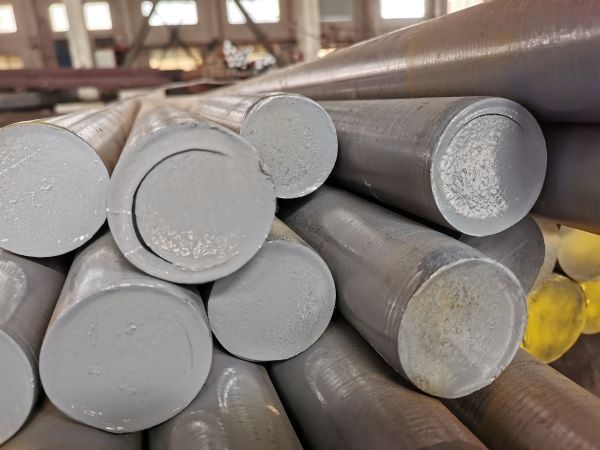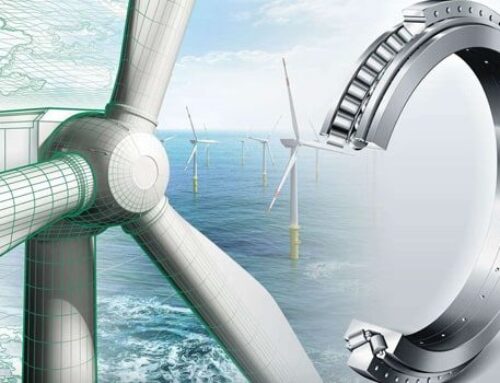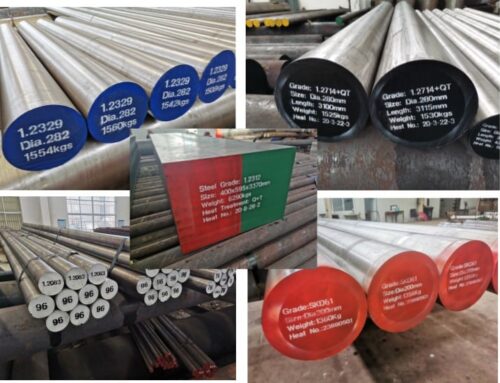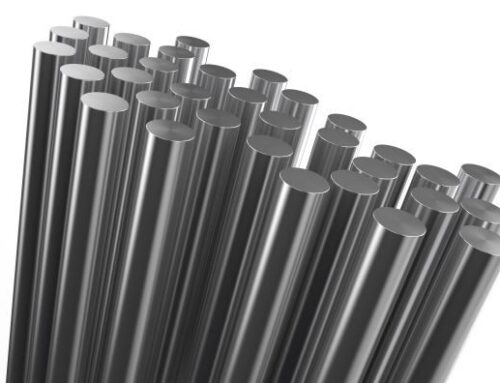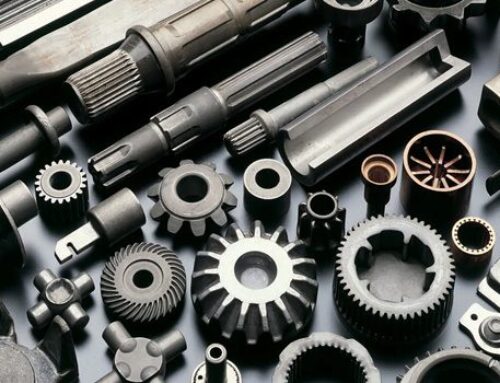WHAT IS INDUCTION HARDENING?
Induction heating is to use electromagnetic induction to generate eddy current inside the workpiece to heat the workpiece. The workpiece is placed in the inductor (the inductor is generally a hollow copper tube that inputs intermediate frequency or high frequency alternating current (300-300000Hz or higher)) to generate alternating current.
The variable magnetic field produces an induced current of the same frequency in the workpiece. The distribution of this induced current in the workpiece is uneven, strong on the surface, but weak in the interior, and it is close to zero in the center.
Using this skin effect, the surface of the workpiece can be rapidly heated with surface temperature rising to 800-1000 ° C in a few seconds, while the temperature of the core increases very little.Since the induction heating process is an instantaneous high temperature and cooling process, the metal surface will not only form martensite due to rapid quenching, but also obtain the pretreatment matrix structure before induction quenching after passing through a narrow quenching zone.
SELECTION OF INDUCTION HEATING FREQUENCY
The frequency is selected according to the requirements of heat treatment and heating depth. The higher the frequency, the shallower the heating depth.
- High Frequency
The depth of high frequency (above 10KHZ) heating is 0.5-2.5mm, which is generally used for the heating of small and medium-sized parts, such as small module gears and small and medium-sized shaft parts.
- Intermediate Frequency
The intermediate frequency (1~10KHZ) heating depth is 2-10mm, which is generally used for the heating of shafts with large diameters and gears with large and medium modules.
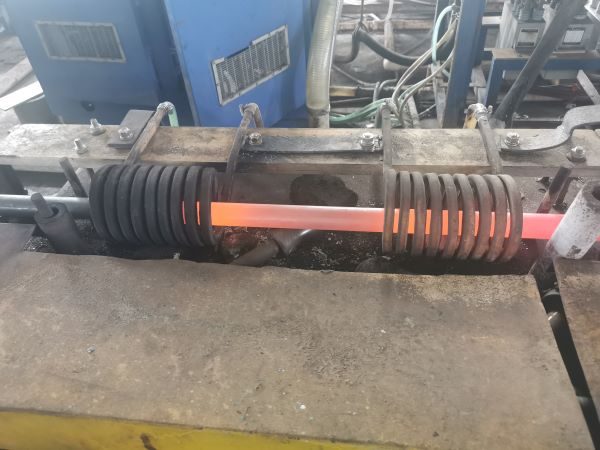
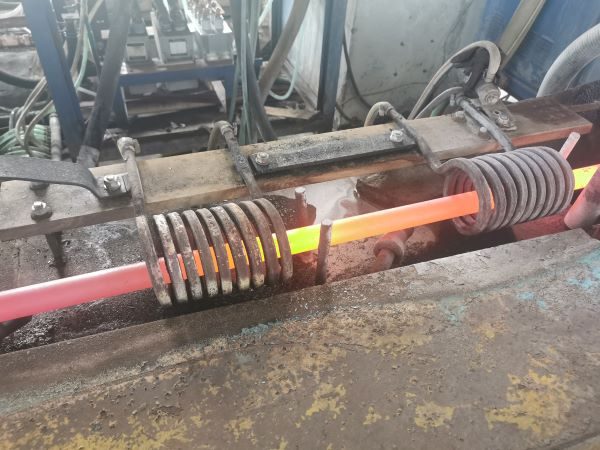
- Power Frequency
The depth of the hardened layer by power frequency (50HZ) heating is 10-20mm, which is generally used for diathermy of larger-sized parts and surface quenching of large-diameter parts (diameter above 300mm, such as rolls, etc.).
FEATURES OF INDUCTION HARDENING
Compared with ordinary quenching, induction heating quenching has the following main characteristics:
- Induction heating belongs to the direct heating of the internal heat source, the heat loss is small and the heat source is concentrated on the surface of the material, the heating speed is fast, and the thermal efficiency is high.
- Since the material is not heated as a whole, usually the core is not heated, so the deformation of the material is small.
- During the heating process, due to the short heating time, the surface oxidation and decarburization of the material is less, and the scrap rate of parts is extremely low compared with other heat treatments.
- After induction heating and quenching, the surface hardness of the parts is high, the core maintains good plasticity and toughness, and shows low notch sensitivity, so the impact toughness, fatigue strength and wear resistance are greatly improved.
- High productivity, suitable for mass production, and easy to mechanize and automate.
Induction quenching is mainly suitable for medium carbon steel and medium carbon alloy steel (such as 1045, 4140, 34CrNiMo6, etc.). It can also be used for high carbon tool steel and alloy tool steel and cast iron.
Usually, pre-heat treatment (normalizing or quenching and tempering) should be carried out before surface quenching, which not only prepares the structure to ensure the quality of surface quenching, but also prepares the structure for the material to have good mechanical properties on the entire section.
After induction quenching, in order to reduce the quenching stress and maintain high hardness and wear resistance, low temperature (180~200℃) tempering is required. For workpieces with simple shapes and mass production, the quenching residual heat can be used for self-heating tempering.
INDUCTION HEATING QUENCHING DEFECTS AND PREVENTION
- Quenching crack
During induction quenching, the volume expansion caused by martensitic transformation is significant. Since the volume expansion of the surface layer is restricted by the chilled material in the core, the surface layer is pulled to prevent it from expanding. As a result, residual compressive stress is formed in the surface layer, and residual tensile stress is formed at the interface between the surface layer and the core. When the surface layer is under pressure, the atoms in the surface layer tend to be compressed close to each other, so induction heating generally does not produce quenching cracks.
However, if the workpiece is locally overheated, it will cause quenching cracking. The temperature rises very quickly during high-frequency induction heating, and the sharp corners, keyways and holes on the workpiece are prone to overheating. In order to prevent quenching cracks, copper plugs or steel plugs can be used to fill the grooves and holes before heating.
Another cause of quench cracks is improper cooling. If the cooling is too slow, so that the cooling rate of the surface layer cannot reach the critical quenching rate, the effect of thermal stress is significant, resulting in the formation of residual tensile stress in the surface layer, which is prone to cracking. Therefore, the workpiece must be cooled quickly after induction heating, especially when high-frequency induction heating is used.
Quenching cracks at the end of the bars
- Quenching Deformation
Induction quenching is surface quenching. During the quenching process, thermal stress and structural stress are only formed on the surface layer. Therefore, the deformation caused by this quenching method is generally not obvious.
However, when the thickness of the heating layer of the shaft and elongated parts is not uniform, quenching warpage will occur. When the shaft parts are heated, they should be rotated continuously to make up for the uneven gap between the workpiece surface and the inductor, so that the heating layer becomes uniform. For elongated parts, the symmetry of the heating layer should be considered, which must be taken into account when designing the inductor.
- Insufficient Hardness
Defects such as insufficient hardness, soft spots and soft bands often appear after high-frequency quenching. The soft band formed by continuous heating and quenching has a dark purple spiral shape, which is caused by the blockage of the water jet holes or the improper size and number of holes. At the same time, insufficient hardness after heating and quenching is often caused by untimely cooling. Changing the angle of the water spray hole and the amount of water spraying, and adjusting the rotation and moving speed of the workpiece can effectively avoid the formation of the spiral soft belt.
Another reason for insufficient hardness is insufficient heating temperature. When the heating temperature of hypoeutectoid steel is not enough, a large amount of ferrite will remain in the structure, resulting in insufficient hardness after quenching. Reducing the moving speed of the workpiece during the continuous heating and quenching process can increase the heating temperature.
DEVELOPMENT AND TREND OF INDUCTION HARDENING
Due to its high quality,high efficiency,energy saving,environmental protection and many other advantages,induction hardening heat treatment technology is widely used in industrial production, and the technical level is rapidly improved.
In addition to replacing carburizing and quenching and tempering processes, induction quenching is developing towards composite heat treatment, opening up new fields. High-intensity induction hardening and frequency conversion hardening will continue to develop and replace a portion of conventional induction hardening.
In the future, the development of induction hardening technology should be fully automated, with more perfect performance, more complete monitoring equipment, and more energy saving and environmental protection.
